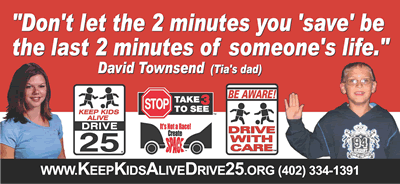Our partners at Teacher's Insurance of New Jersey invite us all to turn "I don"t care" into "I do care" each and every time we get behind the wheel.
Recently LaBron James announced that he would head back to Cleveland to try to lead the Cavaliers to an NBA championship.
What does this have to do with driving?
Sports Illustrated reports that a woman in her early 20's was driving down Interstate 90 from Toledo when she read the news of LaBron's return on her phone. She is quoted as saying, "I know it was unsafe…I don't care."
What is the cost of "I don't care?" Is it the 90+ lives that come to a tragic end on U.S. roadways each day - most the result of distracted driving, speeding, lack of seat belt use, and myriad other behaviors that can be interpreted as a lack of care - for ourselves and for others. Is it the cost of untold grief? Is it the astronomical financial impact of roadway deaths and injuries? Each calculates cost in its own way.
Certainly this young woman is not the only person to engage in unsafe behaviors while driving, and she will not be the last. What is it about us as human beings that oftentimes refuses to practice behaviors that common sense dictates we should practice each and every time we get behind the wheel or ride as a passenger?
You are invited to turn "I don't care" into "I do care." What does this care look like?
Before starting a motor vehicle...
...walk around your vehicle to make sure there are no kids playing behind or around it.
Next...
...hide your cell phone - where you can't reach it - so that it does not serve as a distraction as you drive (remember when no one had to worry about doing this? Cell phone use while driving is becoming the new "Drunk Driving")
Which reminds us once again...
…never drink and drive
Once you are in your vehicle...
...buckle up every trip, and expect all passengers to do so as well, no matter the distance of the trip. Remember, unbuckled passengers can serve as "backseat bullets" careening all over your vehicle in the event of a crash.
...stop at stop signs and taking 3 seconds to look left, look right, look left again - work hard to make sure the street really is clear of other moving vehicles, pedestrians trying to cross, and cyclists making their way along roadways.
…stop to make sure intersections and crosswalks are clear before making lefthand or righthand turns at traffic signals
…observe the speed limit, and drive slower when weather conditions or the presence of children at play, pedestrians, and cyclists dictate doing so.
...be a thinker and use your blinker to signal all turns and lane changes.
…create 3-4 seconds of following distance between your vehicle and the one in front of you so you have time to react to the driving actions of others.
Repetitive practice of all these behaviors, and more, is what helps us improve our driving skills each day. None of us will ever be the perfect driver. Yet, if we are driven to care each time we get behind the wheel, we can make the life-giving difference each and every trip.
It's About Kids! It's About Safety!
It's About Caring! It's About Time!®
Safe travels,
Tom Everson
Keep Kids Alive Drive 25®
A Non-Profit "For Action" Organization 501(c)(3)
402-334-1391
12418 C Street
Omaha, NE 68144
Make your donation to support the KKAD25 mission today @ KKAD25 Donate. A personal thank you note will arrive in your mailbox (not your e-mail box).




















